Fix Your Knees: The Truth About Knee Health
*Disclaimer: Consult your physician/PT before engaging in any exercises mentioned below.
Over 100 million Americans have experienced some form of knee pain, and over 1 in 4 American adults suffer from chronic knee pain.
If there was a simple way to prevent knee pain you would do it, right? Good news: there just might be.
Why Most Knee Injuries Happen
If you want to protect yourself from pain and injury, you have to strengthen all of the muscles that support your knees. Knee injuries occur when you enter vulnerable positions without support. Often, these injuries happen when your “knees go over your toes,” that is if you looked at your side profile, your knees would be in front of your ankles. This is because your knee joint has less support from your larger glute, hip, and quadricep muscles the further your knee goes.
If you think about all of the natural motions in your life, walking, going up and down the stairs, picking something up, or jumping, your knees go over your toes every day. No one wants to fear or experience pain doing the things we love, so how can we keep our knees healthy, safe, and strong? First we need to strengthen our larger muscles, then train our muscles in those vulnerable positions.
The safest knee has the strongest support: Glutes and Hips First!
Before we focus on knee-centered movements, it is essential to build strength in your glutes and hips. These larger muscles stabilize your movements to avoid those vulnerable positions. Before beginning a knees-over-toes program, start with exercises that strengthen your glutes and hips. These include squats, donkey kicks, and bridges. Once you feel confident in your bigger muscles, adding knees-over-toes exercises is a great next step to bulletproof your knees! All exercises can be done in 3 sets with the recommended number of repetitions.
- Dr. Singh’s home workout blog, can cite https://www.rickysinghmd.com/homeworkout/
Squats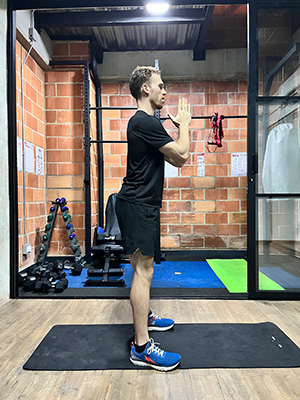
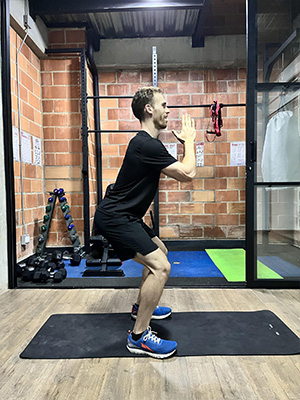
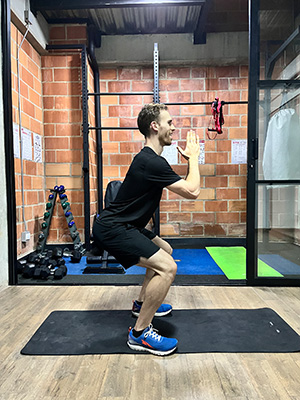
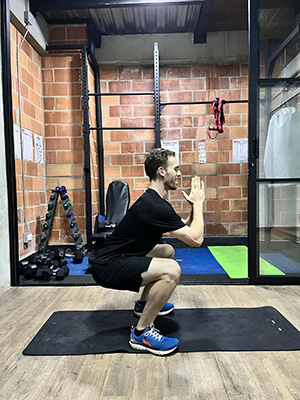
- Stand with your head facing forward and your chest held up and out.
- Place your feet shoulder-width apart or slightly wider.
- Sit back and down like you’re sitting into an imaginary chair.
- Lower down so your thighs are as parallel to the floor as possible, with your knees over your ankles.
- Pushing through your heels, stand up. Repeat 8-12 reps
Donkey Kicks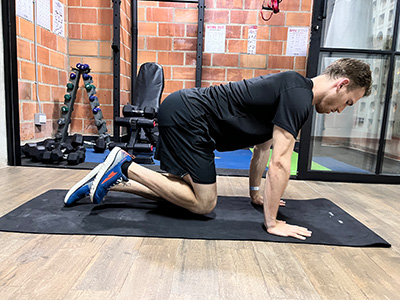
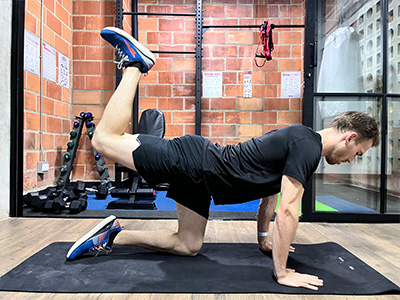
- Get down on all fours. Align your hands under your shoulders and your knees under your hips.
- Keep your right knee bent at 90 degrees and flex the foot as you lift the knee until it is level with the hip.
- Kick back with one leg and squeeze the glutes.
- Bend the knee, lower the leg, and repeat 10-15 reps
- Switch legs.
Bridges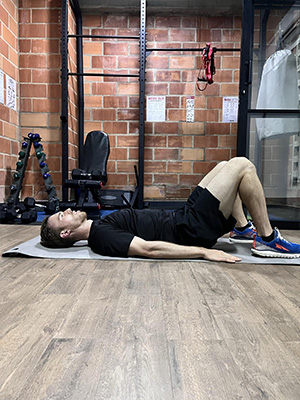
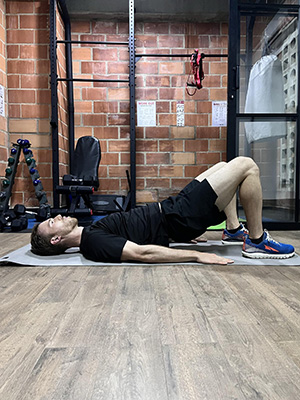
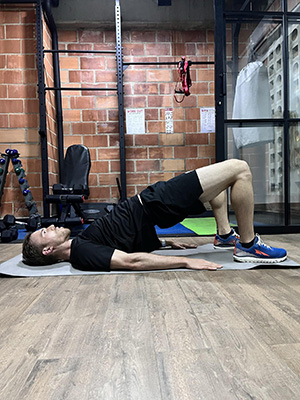
- Lie on the floor with your knees bent
- Flex your glutes and lift your pelvis until your chest and legs are in one line
- Hold the position and slowly lower down. Repeat 8-12 reps
Bulletproof Your Knees: Regressions and Progressions
Some of the following exercises may look like the very motions that make your knees hurt. Work with your physical therapist, coach, or physician before beginning your knee health journey to find your starting point. Regressions (increasing ease) and progressions (increasing difficulty) means adapting the exercises to your current level. This could mean adjusting the depth of the motion or using a tool to balance. Pain outside of the norm during any exercise is a sign to stop and reevaluate. No pain no gain does not apply here!
Knees Over Toes Exercises: 3 sets each
ATG squat (w/regression)
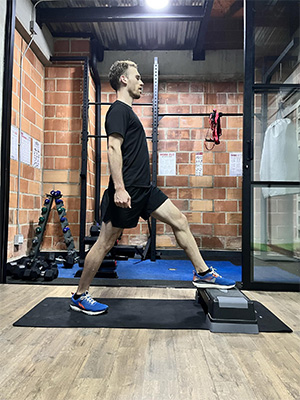
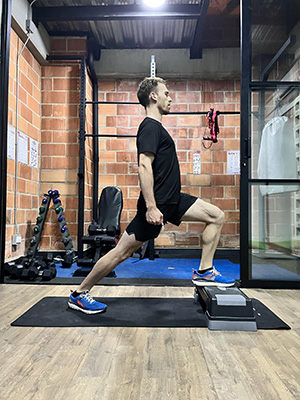
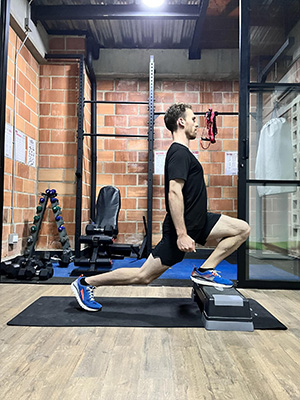
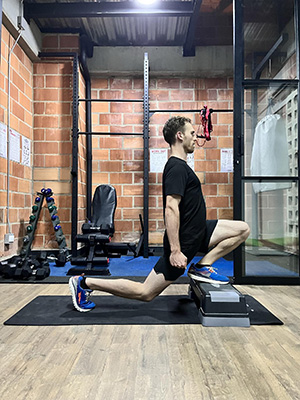
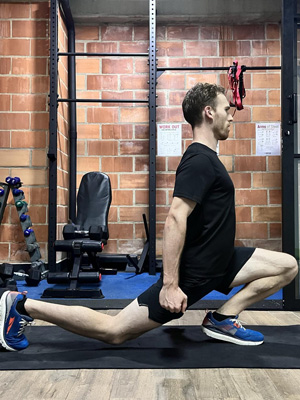
- Widen your legs preparing for a lunge (elevate your front foot to make this easier)
- Keeping your back leg straight (you will feel a hip stretch), lunge down and forward
- Drive your front knee forward and the left glute back until your hamstring meets your calf
- Hold at the bottom and slowly return up. Repeat 4-6 reps
- Regressions: Elevate the front foot and use something to hold onto for balance
Tibialis Raise
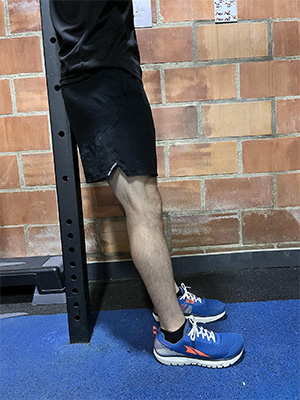
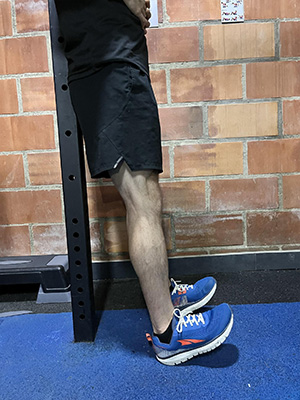
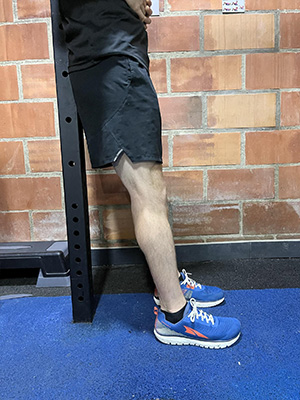
- Put your butt against the wall, and stand out a comfortable distance, with your legs straight (feet close = easier):
- WIthout bending your knees, flex your toes up. Hold for 2 second
- 2 second and hold, 20 reps
- Regressions: Bring your feet closer to the wall
Poliquin step up
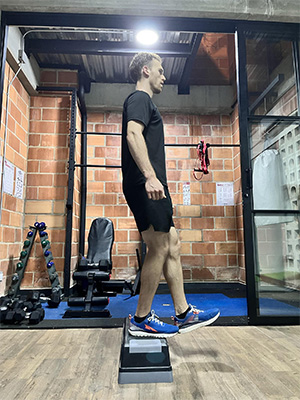


- Stand on a slightly elevated platform
- Point your hovering toes up
- Smoothly squat down, keeping your torso up
- Bend the working knee to about 30 degrees
- Pause at bottom and reverse back to start. 10-15 reps
- Regressions: Use an object to help balance
Conclusion:
Progress takes time. Have fun with these exercises. Remember this is just one part of your journey to knee health so you can keep doing the things you love
“The athlete whose knees can go farthest and strongest over his or her toes is the most protected.” – Charles Poliquin



Leave a Reply